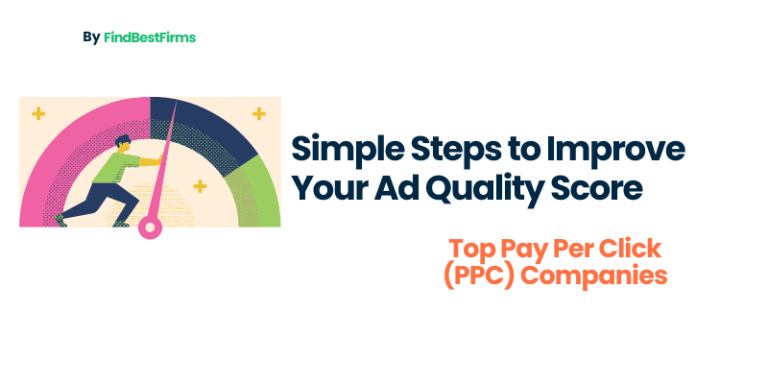Achieving a high Ad Quality Score is crucial for running effective PPC campaigns. This metric, given by platforms such as Google Ads, measures the relevance and performance of your ad. It greatly influences your cost-per-click (CPC), ad visibility, and overall ROI. The following guide offers actionable steps to improve your Ad Quality Score, increase ad effectiveness, and deliver better campaign results.
1. What is Ad Quality Score
Ad Quality Score is a critical factor in pay-per-click (PPC) advertising. It serves as Google’s way of rewarding advertisers who create relevant and user-focused ads. A high Ad Quality Score means:
Lower CPC: You pay less for better positions.
Increased Impressions: Your ad appears in more searches.
Better ROI: Higher Quality Scores reduce advertising costs while improving results.
2. Understand the Components of Quality Score
To increase your Quality Score, you have to know how it’s computed. The three main components are:
a. Click-Through Rate (CTR)
CTR is the frequency by which people click on your ad after viewing it. The higher the CTR, the more relevant and interesting your ad is. Google puts a lot of emphasis on this metric since it represents user interest.
b. Ad Relevance
The more relevant your ad is to the targeted keywords, the better it is aligned with the intent of users. The ads that best match search queries are scored higher.
c. Landing Page Experience
A user-friendly landing page that delivers what your ad promises will also improve your Quality Score. The main factors include page speed, mobile-friendliness, and content relevance.
3. Step-by-Step Guide to Boost Your Quality Score
Step 1: Perform Keyword Research
Strong keyword strategy forms the foundation of your ad campaign. Here’s how to do it:
Use Reliable Tools: Leverage tools like Google Keyword Planner, SEMrush, or Ahrefs to find relevant and high-traffic keywords.
Focus on Long-Tail Keywords: These are more specific, attract higher intent users, and face less competition.
Group Keywords Effectively: Organize keywords into tightly-knit ad groups to create highly targeted campaigns.
Step 2: Optimize Your Ad Copy
Your ad copy is the first impression users get of your offering. Ensure it’s compelling and relevant by:
Writing clear and engaging headlines that grab attention.
Using target keywords naturally without stuffing.
Highlighting unique selling points (USPs), such as free trials or discounts.
Including strong calls-to-action (CTAs) like “Shop Now,” “Learn More,” or “Get a Quote.”
Step 3: Align Ad Copy with User Intent
Your ad must address the specific needs of your audience.
Understand Search Intent: Are users looking for information, comparing products, or ready to buy? Tailor your message accordingly.
Focus on Solutions: Highlight how your product or service solves a problem or fulfills a need.
Step 4: Enhance Landing Page Experience
A great ad gets clicks, but a poorly designed landing page can derail the experience. Improve landing page quality by:
Ensuring fast loading times (Google recommends under 2 seconds).
Designing for mobile responsiveness to cater to mobile users.
Providing content that directly supports your ad copy and keywords.
Simplifying navigation to reduce bounce rates.
Step 5: Test and Monitor Regularly
Optimization is an ongoing process. Here’s how to stay on top:
A/B Test: Experiment with different ad creatives, headlines, and CTAs to determine what works best.
Analyze Data: Use Google Ads reporting tools to track CTR, Quality Score, and conversion rates.
Refine Based on Performance: Pause underperforming ads and replicate successful strategies.
4. Common Mistakes to Avoid
Even experienced advertisers can fall into traps that may harm their quality score. Avoid these mistakes:
Keyword Overload: Don’t stuff your ad with too many keywords. Instead, focus on relevance.
Mobile Optimization Neglected: A poor mobile experience can drastically affect user satisfaction and conversions.
Ignore of Negative Keywords: Ignore irrelevant search terms to spend the budget.
Failure to Update Regularly: The ads can become stale. Update them periodically to maintain their freshness.
5. Tools and Resources to Help
There are several tools and platforms available to help improve your Ad Quality Score. Some of the most popular include:
Google Keyword Planner: For keyword research and analysis.
SEMrush: To analyze competitors’ ad strategies.
Unbounce: To create optimized, high-converting landing pages.
Google Ads Editor: For managing multiple campaigns efficiently.
Working with experts can also give you an edge. Collaborating with Top Pay Per Click companies ensures professional optimization of campaigns, saving you time and increasing ROI.
6. Benefits of a High-Quality Score
Investing time in improving your Quality Score brings significant advantages:
a. Reduced Costs
Google rewards higher Quality Scores with lower CPCs. This means you can achieve better results without increasing your ad spend.
b. Better Ad Placement
High-quality ads earn better positions in the auction process, even with a lower bid, leading to greater visibility.
c. Higher Conversion Rates
Relevant ads combined with optimized landing pages lead to more conversions, as users find exactly what they’re looking for.
d. Improved ROI
By optimizing every aspect of your campaign, you ensure maximum returns on your advertising investment.
7. Conclusion
Improve your Ad Quality Score-an easy but impactful way of optimizing the performance of a PPC campaign. Through more focus on keyword research and ad copy optimization, it would lead to improving experience for the landing page experience, with continuous testing-the end result is always improvement for the business.
Whether you’re managing campaigns independently or partnering with Top Pay Per Click companies, these steps provide a roadmap to success. Start implementing these strategies today and watch your campaign performance soar!

